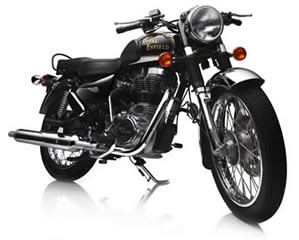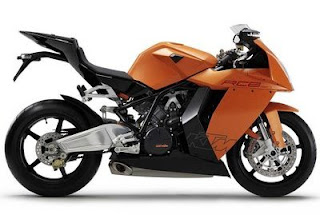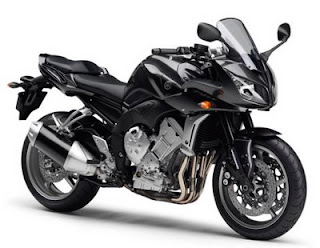Mechanical Engineering is an engineering discipline that was developed from the application of principles from physics and materials science. According to the American Heritage Dictionary, it is the branch of engineering that encompasses the generation and application of heat and mechanical power and the design, production, and use of machines and tools. It is one of the oldest and broadest engineering disciplines.
The field requires a solid understanding of core concepts including mechanics, kinematics, thermodynamics, fluid mechanics, heat transfer, materials science, and energy. Mechanical engineers use the core principles as well as other knowledge in the field to design and analyze manufacturing plants, industrial equipment and machinery, heating and cooling systems, motor vehicles, aircraft, watercraft, robotics, medical devices and more.
Development
Applications of mechanical engineering are found in the
records of many ancient and medieval societies throughout the globe. In
ancient Greece, the works of
Archimedes (287 BC–212 BC) and
Heron of Alexandria (c. 10–70 AD) deeply influenced mechanics in the Western tradition. In
China,
Zhang Heng (78–139 AD) improved a
water clock and invented a
seismometer, and
Ma Jun (200–265 AD) invented a chariot with
differential gears. The medieval Chinese horologist and engineer
Su Song (1020–1101 AD) incorporated an
escapement mechanism into his
astronomical clock tower two centuries before any escapement could be found in clocks of medieval E
as well as the world's first known endless power-transmitting chain drive.[1]
During the years from 7th to 15th century, the era called the Islamic Golden Age, there have been remarkable contributions from Muslim inventors in the field of mechanical technology. Al-Jazari, who was one of them, wrote his famous Book of Knowledge of Ingenious Mechanical Devices in 1206, and presented many mechanical designs. He is also considered to be the inventor of such mechanical devices which now form the very basic of mechanisms, such as the crankshaft and camshaft.[2]
During the early 19th century in England, Germany and Scotland, the development of machine tools led mechanical engineering to develop as a separate field within engineering, providing manufacturing machines and the engines to power them.[3] The first British professional society of mechanical engineers was formed in 1847, thirty years after civil engineers formed the first such professional society.[4] On the European continent, Johann von Zimmermann (1820 - 1901) founded the first factory for grinding machines in Chemnitz (Germany) in 1848. In the United States, the American Society of Mechanical Engineers (ASME) was formed in 1880, becoming the third such professional engineering society, after the American Society of Civil Engineers (1852) and the American Institute of Mining Engineers (1871).[5] The first schools in the United States to offer an engineering education were the United States Military Academy in 1817, an institution now known as Norwich University in 1819, and Rensselaer Polytechnic Institute in 1825. Education in mechanical engineering has historically been based on a strong foundation in mathematics and science.[6]
The field of mechanical engineering is considered among the broadest of engineering disciplines. The work of mechanical engineering ranges from the depths of the ocean to outer space.
[edit] Education
Degrees in mechanical engineering are offered at universities worldwide. In Bangladesh, China, India, Nepal, North America, and Pakistan, mechanical engineering programs typically take four to five years and result in a Bachelor of Science (B.Sc), Bachelor of Technology (B.Tech), Bachelor of Engineering (B.Eng), or Bachelor of Applied Science (B.A.Sc) degree, in or with emphasis in mechanical engineering. In Spain, Portugal and most of South America, where neither BSc nor BTech programs have been adopted, the formal name for the degree is "Mechanical Engineer", and the course work is based on five or six years of training. In Italy the course work is based on five years of training; but in order to qualify as an Engineer you have to pass a state exam at the end of the course.
In the U.S., most undergraduate mechanical engineering programs are accredited by the Accreditation Board for Engineering and Technology (ABET) to ensure similar course requirements and standards among universities. The ABET web site lists 276 accredited mechanical engineering programs as of June 19, 2006.[7] Mechanical engineering programs in Canada are accredited by the Canadian Engineering Accreditation Board (CEAB),[8] and most other countries offering engineering degrees have similar accreditation societies.
Some mechanical engineers go on to pursue a postgraduate degree such as a Master of Engineering, Master of Technology, Master of Science, Master of Engineering Management (MEng.Mgt or MEM), a Doctor of Philosophy in engineering (EngD, PhD) or an engineer's degree. The master's and engineer's degrees may or may not include research. The Doctor of Philosophy includes a significant research component and is often viewed as the entry point to academia.[9]
[edit] Coursework
Standards set by each country's accreditation society are intended to provide uniformity in fundamental subject material, promote competence among graduating engineers, and to maintain confidence in the engineering profession as a whole. Engineering programs in the U.S., for instance, are required by ABET to show that their students can "work professionally in both thermal and mechanical systems areas."[10] The specific courses required to graduate, however, may differ from program to program. Universities will often combine multiple subjects into a single class or split a subject into multiple classes, depending on the faculty available and the university's major area(s) of research. Fundamental subjects of mechanical engineering usually include:
Mechanical engineers are also expected to understand and be able to apply basic concepts from chemistry, chemical engineering, electrical engineering, civil engineering, and physics. Most mechanical engineering programs include several semesters of calculus, as well as advanced mathematical concepts which may include differential equations and partial differential equations, linear and modern algebra, and differential geometry, among others.
In addition to the core mechanical engineering curriculum, many mechanical engineering programs offer more specialized programs and classes, such as robotics, transport and logistics, cryogenics, fuel technology, automotive engineering, biomechanics, vibration, optics and others, if a separate department does not exist for these subjects.[13]
Most mechanical engineering programs also require varying amounts of research or community projects to gain practical problem-solving experience. In the United States it is common for mechanical engineering students to complete one or more internships while studying, though this is not typically mandated by the university.
[edit] License
Engineers may seek license by a state, provincial, or national government. The purpose of this process is to ensure that engineers possess the necessary technical knowledge, real-world experience, and knowledge of the local legal system to practice engineering at a professional level. Once certified, the engineer is given the title of Professional Engineer (in the United States, Canada, Japan, South Korea, Bangladesh and South Africa), Chartered Engineer (in the UK, Ireland, India and Zimbabwe), Chartered Professional Engineer (in Australia and New Zealand) or European Engineer (much of the European Union). Not all mechanical engineers choose to become licensed; those that do can be distinguished as Chartered or Professional Engineers by the post-nominal title P.E., P. Eng., or C.Eng., as in: John Doe, P.Eng.
In the U.S., to become a licensed Professional Engineer, an engineer must pass the comprehensive FE (Fundamentals of Engineering) exam, work a given number of years as an Engineering Intern (EI) or Engineer-in-Training (EIT), and finally pass the "Principles and Practice" or PE (Practicing Engineer or Professional Engineer) exams.
In the United States, the requirements and steps of this process are set forth by the National Council of Examiners for Engineering and Surveying (NCEES), a national non-profit representing all states. In the UK, current graduates require a BEng plus an appropriate masters degree or an integrated MEng degree plus a minimum of 4 years post graduate on the job competency development in order to become chartered through the Institution of Mechanical Engineers.
In most modern countries, certain engineering tasks, such as the design of bridges, electric power plants, and chemical plants, must be approved by a Professional Engineer or a Chartered Engineer. "Only a licensed engineer, for instance, may prepare, sign, seal and submit engineering plans and drawings to a public authority for approval, or to seal engineering work for public and private clients."[14] This requirement can be written into state and provincial legislation, such as Quebec's Engineer Act.[15] In other countries, such as Australia, no such legislation exists; however, practically all certifying bodies maintain a code of ethics independent of legislation that they expect all members to abide by or risk expulsion.[16]
[edit] Salaries and workforce statistics
The total number of engineers employed in the U.S. in 2004 was roughly 1.4 million. Of these, 226,000 were mechanical engineers (15.6%), second only to civil engineers in size at 237,000 (16.4%). The total number of mechanical engineering jobs in 2004 was projected to grow 9% to 17%, with average starting salaries being $50,256 with a bachelor's degree, $59,880 with a master's degree, and $68,299 with a doctorate degree. This places mechanical engineering at 8th of 14 among engineering bachelors degrees, 4th of 11 among masters degrees, and 6th of 7 among doctorate degrees in average annual salary.[17] The median annual income of mechanical engineers in the U.S. workforce is roughly $63,000. This number is highest when working for the government ($72,500), and lowest when doing general purpose machinery manufacturing in the private sector ($55,850).[18]
Canadian engineers make an average of $29.83 per hour with 4% unemployed. The average for all occupations is $18.07 per hour with 7% unemployed. Twelve percent of these engineers are self-employed, and since 1997 the proportion of female engineers has risen to 6%.[19]
Mechanical Engineering is the second highest paid profession in the UK behind medicine. A Mechanical Engineer with a CEng Status earns an average of £55,000 a year.[citation needed]
[edit] Modern tools

An oblique view of a four-cylinder inline crankshaft with pistons.
Many mechanical engineering companies, especially those in industrialized nations, have begun to incorporate computer-aided engineering (CAE) programs into their existing design and analysis processes, including 2D and 3D solid modeling computer-aided design (CAD). This method has many benefits, including easier and more exhaustive visualization of products, the ability to create virtual assemblies of parts, and the ease of use in designing mating interfaces and tolerances.
Other CAE programs commonly used by mechanical engineers include product lifecycle management (PLM) tools and analysis tools used to perform complex simulations. Analysis tools may be used to predict product response to expected loads, including fatigue life and manufacturability. These tools include finite element analysis (FEA), computational fluid dynamics (CFD), and computer-aided manufacturing (CAM).
Using CAE programs, a mechanical design team can quickly and cheaply iterate the design process to develop a product that better meets cost, performance, and other constraints. No physical prototype need be created until the design nears completion, allowing hundreds or thousands of designs to be evaluated, instead of a relative few. In addition, CAE analysis programs can model complicated physical phenomena which cannot be solved by hand, such as viscoelasticity, complex contact between mating parts, or non-Newtonian flows
As mechanical engineering begins to merge with other disciplines, as seen in mechatronics, multidisciplinary design optimization (MDO) is being used with other CAE programs to automate and improve the iterative design process. MDO tools wrap around existing CAE processes, allowing product evaluation to continue even after the analyst goes home for the day. They also utilize sophisticated optimization algorithms to more intelligently explore possible designs, often finding better, innovative solutions to difficult multidisciplinary design problems.




